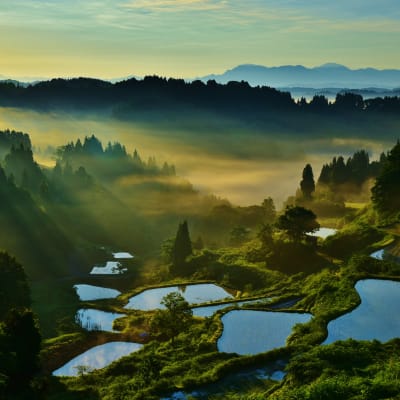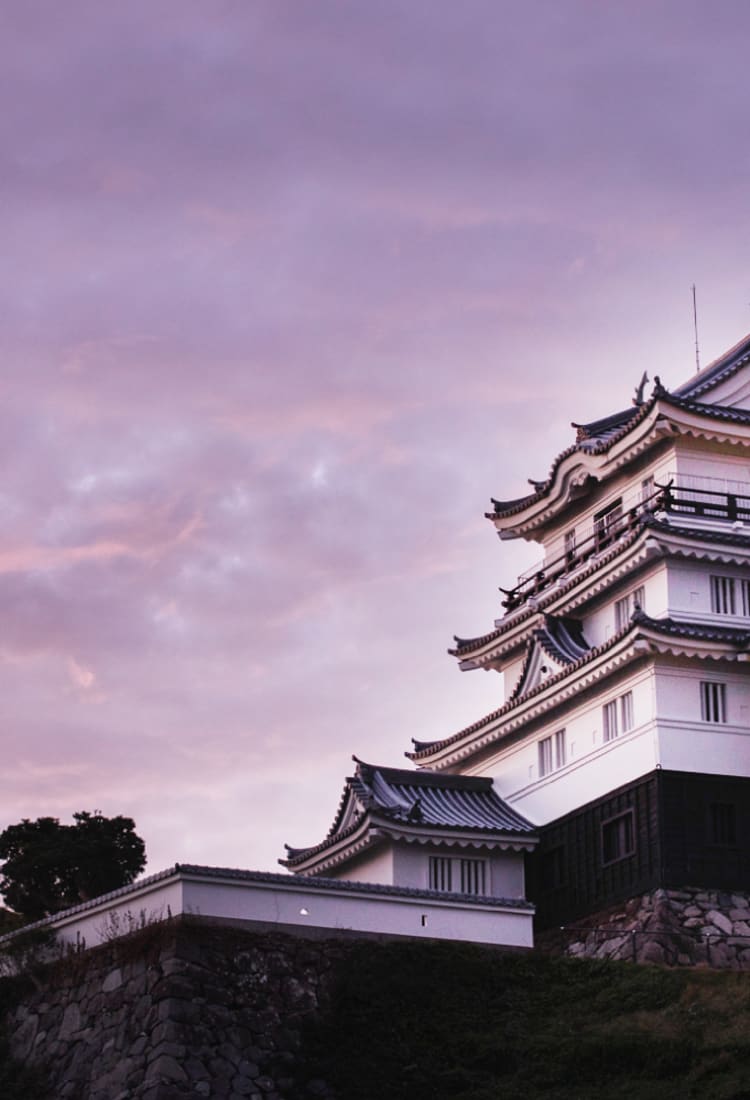
Castle Stays Hirado Castle Sojourn in a Samurai Castle on a Secluded Island Steeped in History
Experience Japanese heritage and rich cultural influences on a tranquil island in Nagasaki
Overlooking the calm, turquoise waters of a narrow strait, the Kaiju Yagura turret of Hirado Castle weaves samurai history with opulent aesthetics and modern design. The turret is exclusively available as a private retreat, and a stay offers guests the opportunity to immerse themselves in the history and culture of Hirado. From the introduction of tea and Zen Buddhism to Japan to the town’s emergence as a trading hub and the legacy of the region’s “hidden Christians,” the area has a fascinating heritage.

Guests have exclusive after-hours access to the Tenshukaku main keep (left), during their stay.
(c) 2020 HIRADO CITY. All Rights Reserved.
While staying at the castle, guests can enjoy bespoke cultural experiences that include ancient martial arts and zazen meditation. Explore the town to eat fresh seafood near the port, stroll the historic streets, and see samurai armor and other artifacts on display at the Matsura Historical Museum. Outside of the town, take a scenic excursion along the coast, enjoy a leisurely day of sailing, or walk in one of Japan’s beautiful national parks.
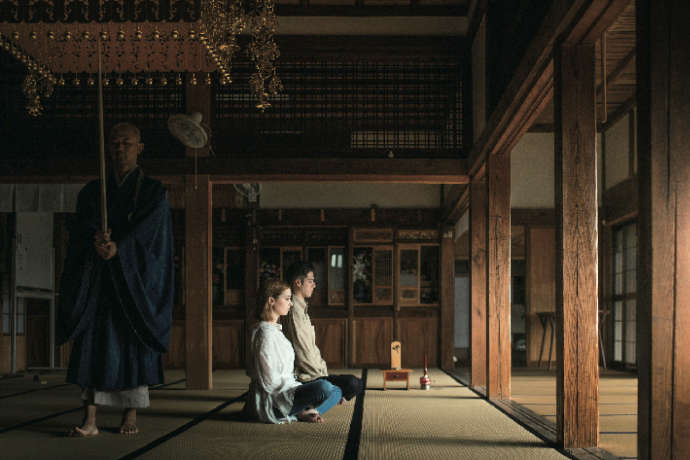
Zazen meditation, one of many exclusive experiences that can be arranged for you
(c) 2020 HIRADO CITY. All Rights Reserved.
Arrive in style
Hirado is a quiet island in the north of Nagasaki, connected to the Kyushu mainland by a suspension bridge. Guests will be met by a driver at their choice of nearby airports including Fukuoka Airport, and chauffeured to the castle, through the charming Nagasaki countryside. Your luggage will be delivered to your private turret as you enjoy a tour of the castle grounds.
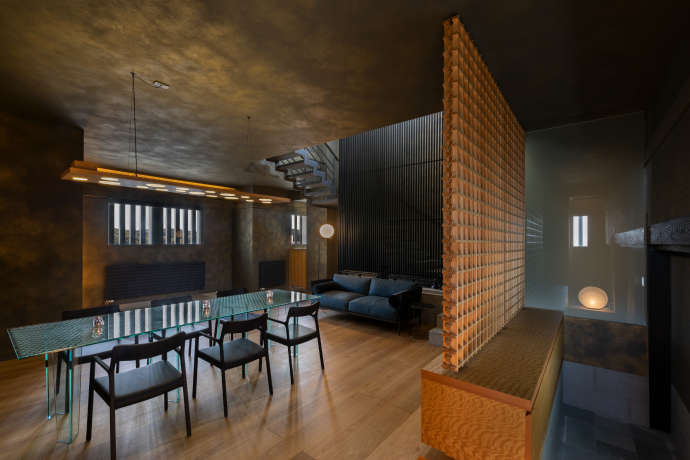
The interior of the Kaiju Yagura, your private turret
(c) 2020 HIRADO CITY. All Rights Reserved.
The two-story Kaiju Yagura, beautifully renovated in 2020, will be your home for the duration of your stay. Enjoy a vintage bottle of wine on the deck beside the turret while gazing out across the Hirado Strait, or freshen up before dinner with a luxurious soak in the sunken bathtub.

Bathe with the Hirado Strait as your backdrop.
(c) 2020 HIRADO CITY. All Rights Reserved.
A modern take on Japanese aesthetics
The castle dates from the sixteenth century and was the seat of the Matsura family, who ruled over the Hirado area from the twelfth to late nineteenth centuries.
The interior was designed with an emphasis on locally sourced natural materials, by Atelier Tekuto, an award-winning design firm headed by Kyushu-born architect Yamashita Yasuhiro.
Clean lines and a chic modern design incorporating traditional Japanese aesthetics blend with wood flooring and furnishings.

Inside the turret
(c) 2020 HIRADO CITY. All Rights Reserved.
The walls are a burnished gold color and feature vibrant designs including cherry blossoms, maple leaves, and butterflies, in a style reminiscent of Rinpa, an Edo-period (1603–1867) painting style. The colorful designs are the work of Komatsu Takahide, a painter from Kyushu who draws on Rinpa techniques in his own works.
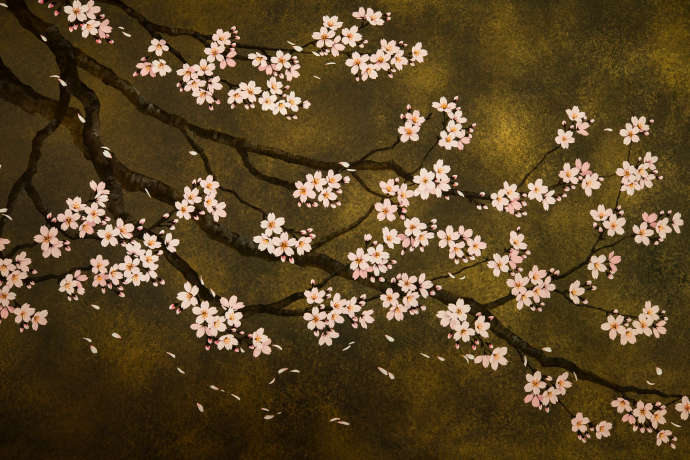
Beautiful designs adorn the walls.
(c) 2020 HIRADO CITY. All Rights Reserved.
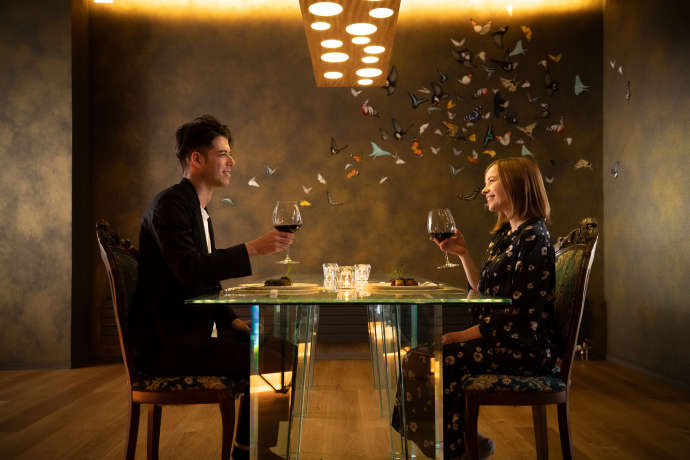
Butterflies feature on the walls of the dining room.
(c) 2020 HIRADO CITY. All Rights Reserved.
Savor fine dining with local flavor
While staying at the castle, guests have their own personal chef, who will prepare French fusion cuisine with the finest seasonal ingredients, from freshly caught seafood to premium Hirado beef. Meals are served on custom-made porcelain tableware from Arita, a renowned pottery town in Saga, Kyushu. Enjoy fine dining in the comfort of the turret, with every detail taken care of.

Enjoy French fusion cuisine prepared using ingredients from Hirado.
Experiences to remember
From a gagaku court music performance to martial arts training, the castle concierge is happy to arrange any number of unforgettable experiences. Try iaijutsu, a combative quick-draw sword technique and dedicated form of exercise practiced by many generations of samurai. Guests will receive an introduction to the art and be able to practice wielding a katana, a single-edged sword.

Experience iaijutsu, a martial art practiced by samurai.
Hirado was the location of Japan’s first Zen temple, Fushu-an, founded by Eisai (1141–1215), the priest credited with introducing Zen Buddhism to Japan. He landed in Hirado in 1191 after returning from studies in China. With Zen Buddhism, he also brought tea culture, and planted tea seeds at the temple. Experience this heritage through zazen meditation at a local Zen temple, or participate in an elegant tea ceremony, dressed in a formal kimono.

Freshly whisked matcha and a wagashi sweet, served during the tea ceremony
Uncover the past—the Matsuras and trade
The Matsura Historical Museum is housed in the nineteenth-century Matsura residence and presents the history of Hirado through the personal effects of many generations of the family. The extensive collection includes hand-crafted sets of samurai armor, maps and other documents, and a great wealth of artworks from Rinpa paintings and hanging scrolls to pottery.

The sloping eaves of the museum in the background

Exhibits include samurai armor.
The Matsuras were a prosperous and influential family who established themselves through diplomacy and trade. In the fifteenth century, they engaged in trade with Ming-dynasty China (1368–1644). In the sixteenth century, the Matsuras allowed Portuguese traders to set up a trading base in Hirado, granting them the freedom to conduct Christian missionary work in exchange for the knowledge of gunpowder. In the seventeenth century, the Dutch East India Company established a trading post in Hirado, trading Chinese silk and Japanese silver, and the English also opened a trading post, introducing sweet potatoes and beer to Japan.
Throughout the town, there are several reminders of Hirado’s rich trading heritage through statues, relics, and buildings such as the Hirado Dutch Trading Post and the Saint Francis Xavier Memorial Church.
Uncover the past—Japan’s early Christians
The Saint Francis Xavier Memorial Church is one of many churches on the island of Hirado. It commemorates Francis Xavier (1506–1552), a Christian missionary who led an extensive mission into Asia, arriving in Japan in 1549. The pastel-colored church is on a hillside across from the castle and makes for a pleasant stroll.

The Francis Xavier Memorial Church, a testament to Hirado’s Christian heritage
© Nagasaki Prefecture Convention and Tourism Association (NPTA), with permission from the Archdiocese of Nagasaki.
The introduction of Christianity to Japan in parts of Kyushu in the mid-sixteenth century was followed by an era of prohibition that lasted from the seventeenth to nineteenth centuries. Risking persecution, Japanese Christians were forced to conceal their faith. Some formed underground communities, continuing to practice their faith in secrecy. Through communities of “hidden Christians” in northern Nagasaki, Japan’s early Christians were able to maintain and pass on their faith. The churches in Hirado are a testimony to this legacy. Explore more of this history at UNESCO Hidden Christian Sites in the Nagasaki Region.
Discover the local food culture
Connect with Hirado through its cuisine at a local izakaya or restaurant, where you can choose from regional dishes and seasonal fare that include hearty noodle dishes like Hirado champon, healthy hotpots, and ocean-fresh sashimi and sushi.
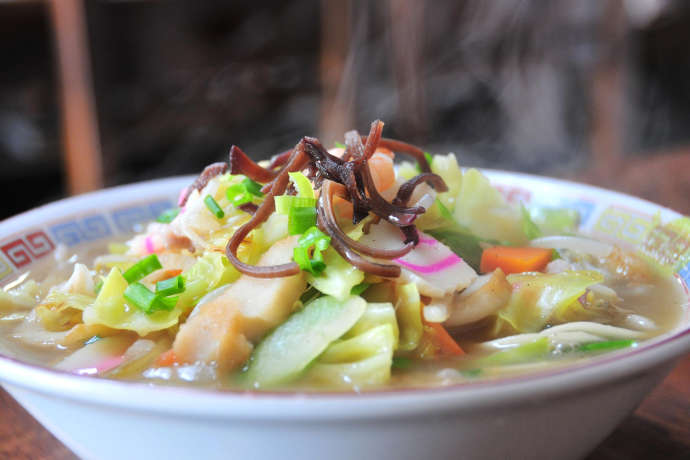
Local soul food, Hirado champon
Ten minutes on foot from the castle, Oodokkuri is a homely Japanese restaurant serving a generous selection of seafood dishes available a la carte or as part of a course. Try chazuke, a dish of sea bream or flounder sashimi (sometimes marinated) served over a steaming bowl of rice, with broth (or tea) to pour over the top. Check the specialty menu or talk to the chef for seasonal sashimi recommendations, which may include yellowtail, squid, fan lobster, or flounder—all local delicacies. Pair your meal with a locally brewed sake or a shochu, distilled from sweet potatoes.

Chazuke, a warming and delicately flavored local dish
Explore the island
The castle concierge can arrange a chauffeur to take you around the island and introduce sequestered spots of scenic beauty and rural charm. Ride a horse on the golden sands of Senrigahama beach, which faces the Hirado Strait and affords views of several small islands.
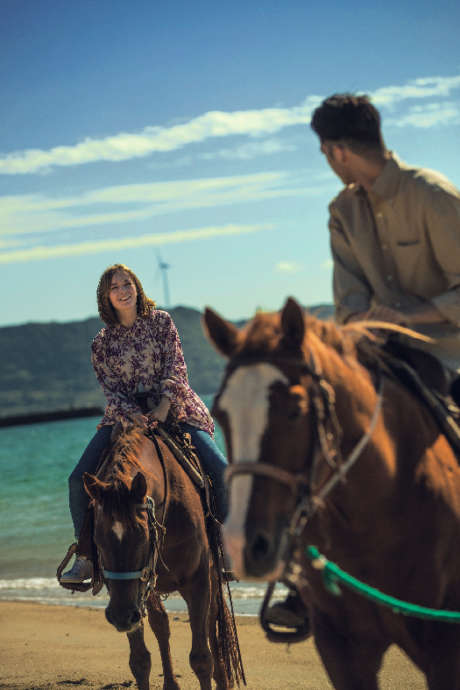
Horse riding at Senrigahama beach
In the village of Kasuga, near the bridge that connects Hirado and Ikitsuki islands, terraced rice paddies stretch almost as far as the eye can see. The view of the fields makes for a good photo and a pleasant stop. Before returning to the castle, take in the unobstructed view of the sunset from along the Ikitsuki Sunset Way, a meandering road that snakes along Ikitsuki’s western coast.
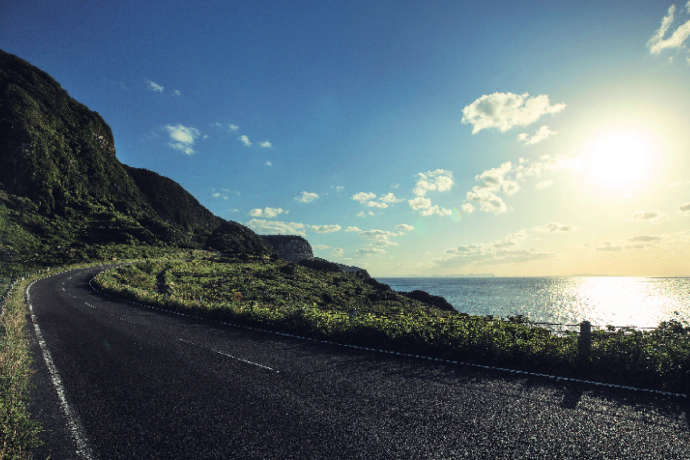
The view of the setting sun from the Ikitsuki Sunset Way
Journey through Nagasaki
Hirado Castle is a convenient base for exploring northern Nagasaki including the stunning Saikai National Park, which encompasses a dense network of islets known as the Kujuku Islands. An intimate way to explore the islands is to charter a yacht, available through Kujukushima Cruising.
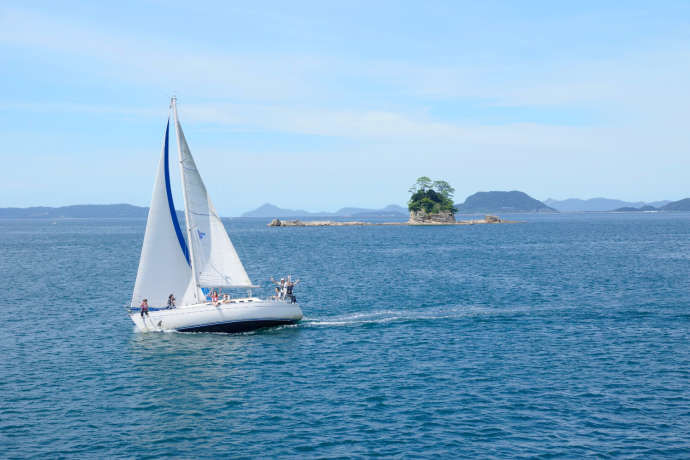
Sail the Kujuku Islands on a chartered yacht.
For elevated views of the island, visit Nagushiyama Park, a hillside park planted with swathes of azalea shrubs. Its location affords sweeping views of the ocean.
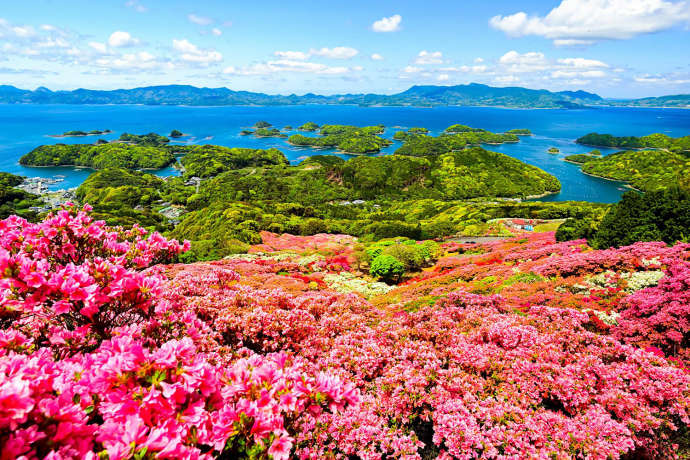
Azaleas in bloom at Nagushiyama Park, with the Kujuku Islands in the background
©Seiichiro Tomohiro
Explore more of Nagasaki, traveling south to Nagasaki City, a cosmopolitan port town with a multi-faceted and very international history. Visit Dejima Wharf, where Dutch traders opened a new trading post after leaving Hirado in the late sixteenth century, take a tour of Hashima Island, an abandoned offshore coal mining facility from the nineteenth century, or stroll Nagasaki Peace Park, with its artworks that deplore the use of nuclear weapons and call for world peace.
Measures against the spread of COVID-19
The staff at Hirado Castle is taking measures to prevent the spread of COVID-19, including wearing masks, regularly disinfecting and ventilating rooms and facilities, and making alcohol hand sanitizers available.
Please note that certain programs and events may have been canceled or temporarily suspended due to COVID-19. Please inquire with the castle management team for the latest information.
































































